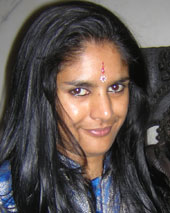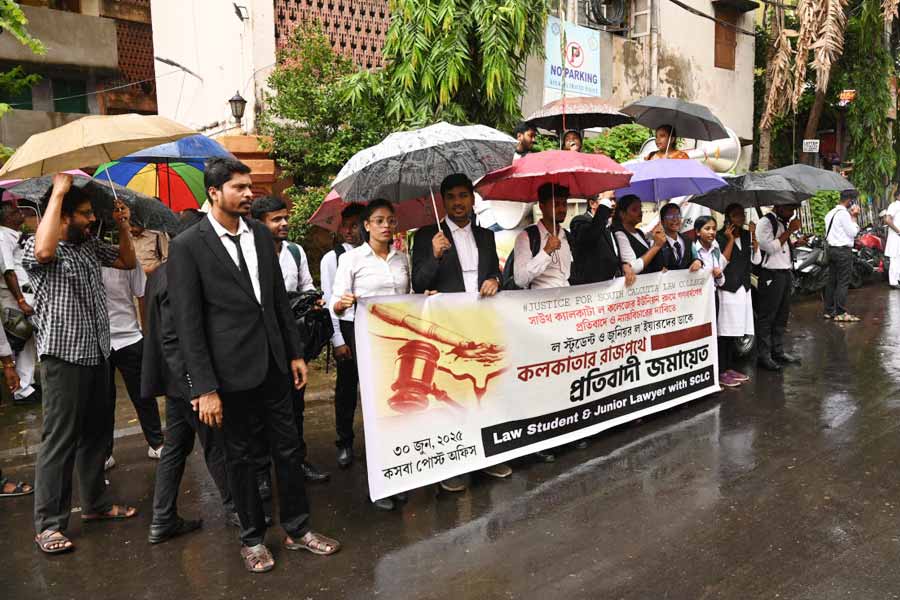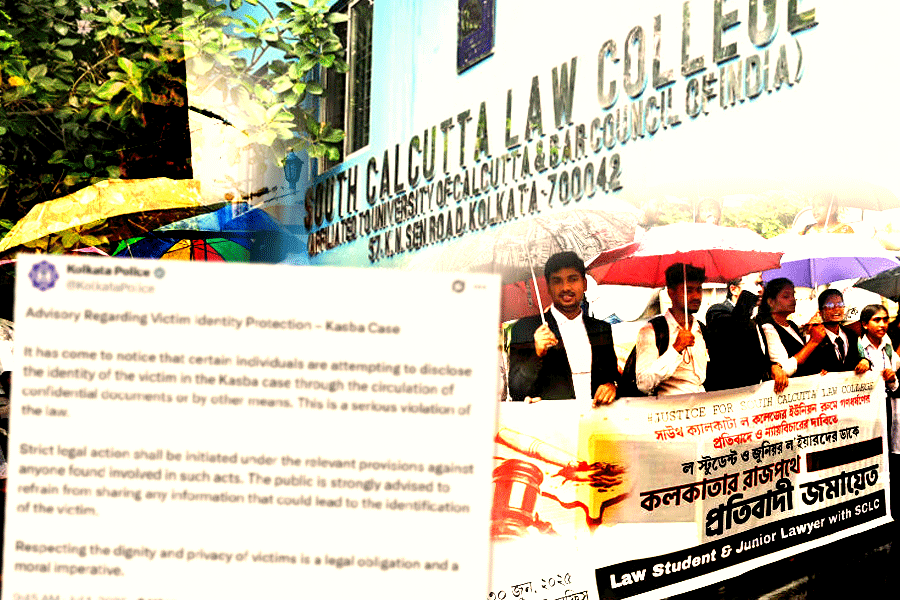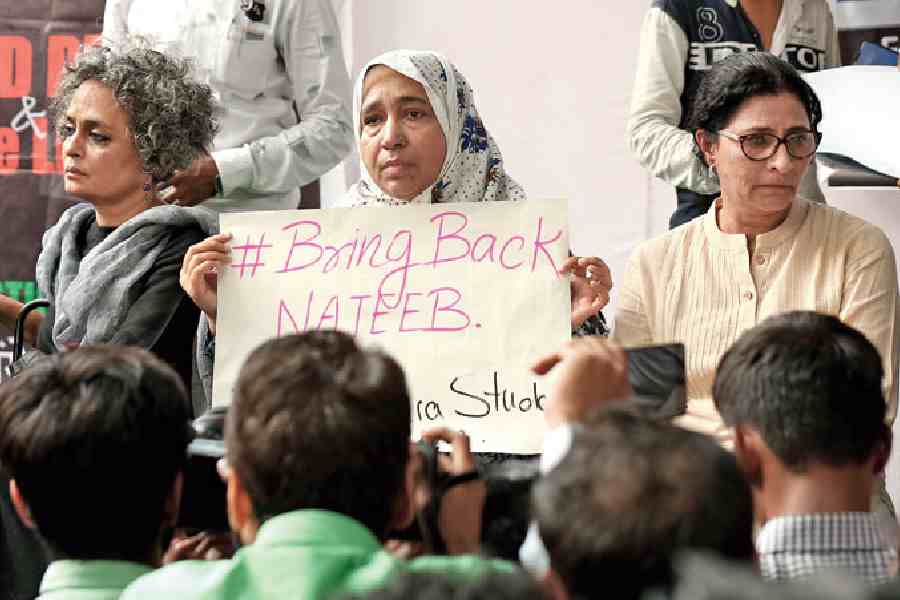 |
| ON GUARD: Sona Datta |
How British is the British museum
There was a time when we Indians could have been angry with the British Museum for filling its cavernous rooms and basements with treasures from India — and every other country the British have ruled. But Sona Datta, a pretty, young thing who is part of the curatorial team in its Asia department has a little joke which puts matters into perspective.
“They took the Mughal treasures from India — and now they have got me guarding them,” she remarked wryly.
I am glad the museum cast its net wide to recruit someone like Sona, a Bengali girl but not brought up in as British a city as Calcutta (she is UK produce). The museum is a place which respects tradition and seniority. Another 30 years and she will make it to assistant keeper. Having read history and philosophy at King’s College, Cambridge, which generally picks the brightest of the bright (P.C. Mahalanobis studied here, as did Aurobindo Ghosh, although admittedly a long time ago), she is currently working on her MA thesis (or is it her PhD?).
Anyway, the museum treasures its Indian treasures, and irrespective of how they were acquired, they are being put on display. This is not excusing cultural theft but the truth of the matter is that we, in India, do not look after our treasures as well as the British do with all that they have taken from us. Since London is now the capital of Greater India, the old ideas of what is ours and theirs have got a little blurred.
The statues of Durga, Ganesh, Saraswati, Kartik and the others are all done, ready for the Mahalaya celebrations in the museum’s Great Court today.
The Voices of Bengal exhibition at the museum is now up and running. At the formal opening of one of its elements, Myths of Bengal, the museum’s director, Dr Neil MacGregor, referred to Tagore’s paintings, which have also been brought out for display.
MacGregor was flanked by many people who have worked on Voices of Bengal, including Richard Blurton, assistant keeper in the museum’s Asia department — he would be a good man to help Calcutta Museum achieve better display and preservation techniques, and Ruby Palchoudhuri, executive director of the West Bengal Crafts Council.
“Tagore was the conscience of the British empire,” said MacGregor, whose museum has perhaps become a kind of conscience of multicultural Britain.
The British Museum is so British in a nice old fashioned way that, in order not to give offence, it chose not to include the influence of the British — good and bad — in shaping Bengali culture. “It’s difficult for us to do that,” a source at the museum told me.
For me, the real stars of the last few weeks have been the skilled craftsmen who have fascinated tens of thousands of people as they have quietly fashioned the pratimas — Nimai Chandrapal and his colleagues, Bishwajit Chakravarti and Madhusudan Pal.
 |
| GAMES PEOPLE PLAY: Jam Saheb Digvijaysinhji with Harshad Kumari |
Luxury loving
When it comes to exploring Indians’ love for western luxury goods — the “craze for phoren”, as V.S. Naipaul called it (I think) — the more things change, the more they remain the same.
Earlier this summer, DLF property magnate K.P. Singh told me of the Emporio, the mother of all shopping malls in Delhi which will stock only the best known luxury brands from the West — Dior, Chanel, Bulgari, Ferragamo, Hermes, Prada, Armani, Fendi, Tiffany, Hugo Boss, Nine West, Etienne Aigner and Canali.
We have been here before, as demonstrated by a fascinating new book by Amin Jaffer, curator in the Asian department at the Victoria and Albert Museum in London.
Made for Maharajahs: A Design Diary of Princely India ( New Holland Publishers, £40 in the UK; and Roli & Janseen BV in India) reveals how the maharajahs of yesteryear shopped till their subjects dropped. Without the patronage of the princes, many of the famed luxury brands of the West — who are today reviving past relationships with the new business maharajahs of India — would probably have gone bust.
 |
| ROYAL TOUCH: Maharajah Jagajit Singh’s Louis Vuitton trunk |
Jaffer, who specialises in Indian art and culture and whose previous works include Furniture from British India and Ceylon, clearly has had fun cataloguing the madness of the maharajahs.
Some, for example Jagajit Singh of Kapurthala, had good taste. The Francophile ruler was among Louis Vuitton’s favourite customers — the monogram canvas trunk he ordered somehow looks better now that it’s battered.
Others were indulgent towards their kids. The Jam Saheb Digvijaysinhji of Nawanagar had a “Rytecraft Special” car custom made for his daughter Princess Harshad Kumari in 1939. But after it was “admired” by the young prince of Jaipur, Bhawani Singh, it was gifted to him for his birthday.
Jaffer’s research has unearthed a real treasure trove. The princes had their jewels recut and remodelled in Europe, frequently by Cartier, hired western architects to design their palaces and bought western trinkets as though there was no tomorrow. Some figures, such as the ample one of Bhupinder Singh of Patiala, crop up again and again in the book.
“Ever since I can remember, it was my greatest ambition to travel in western countries, and judge for myself the marvellous things that were told to me concerning them,” he wrote in 1895 in My Travels in Europe and America.
The first law of luxury brands demands that your neighbour shouldn’t have whatever it is you have.
“I bought this in Cannes market,” strikes the right note.
“I bought this in Khan market,” doesn’t have the same ring.
Phone a friend
Researchers trying to think up new questions for Who Wants to be a Millionaire? — the model for the Amitabh Bachchan-fronted KBC — have suggested a cruel one to its celebrity presenter, Chris Tarrant, who has been married to his wife, Ingrid, for 15 years.
Which cheating game show host has been slung out by his wife? a) Graham Norton; b) Bruce Forsyth; c) John Humphreys; d) none of them.
Those needing help can always phone Chris Tarrant’s special friend, Fiona McKechnie, a “glamourous” teacher whom he has known — rather too well, according to last week’s News of the World — for 10 years.
Getting it right
India House is in a tizzy as it prepares for the visit by Manmohan Singh for his economic summit with Tony Blair in London on October 10, which will be followed by the India-EU summit in Helsinki on October 12. But the really important speech for the Indian Prime Minister’s reputation is the one he gives in Cambridge on October 11 when receiving his honorary degree.
The one mistake he must not make, as he did in Oxford last year, is to read it out. It should, above all, be witty.
 |
| STAR TREK: Dolls on display at Harrods |
Tittle tattle
Harrods, the “top people’s store” in London’s Knightsbridge, is selling 12-inch Bollywood dolls of Shah Rukh Khan, Kajol, Priyanka Chopra and Hrithik Roshan. More may follow.
The £24.99 dolls are the work of creator Shameen Jivraj and Spin Master Toys UK.
But is the venture wise?
“What if the dolls turn out to be less wooden than the originals?” wondered a Bollywood well-wisher.










